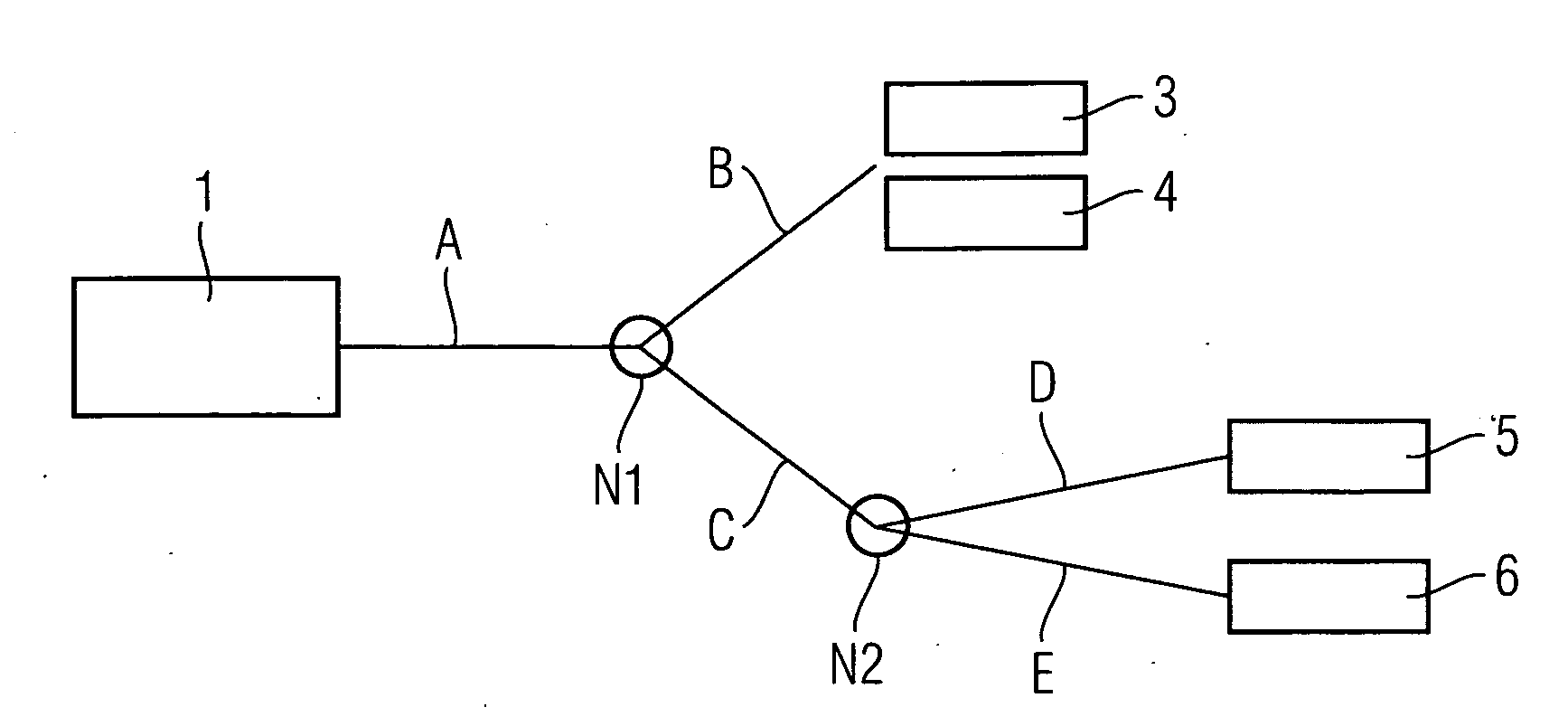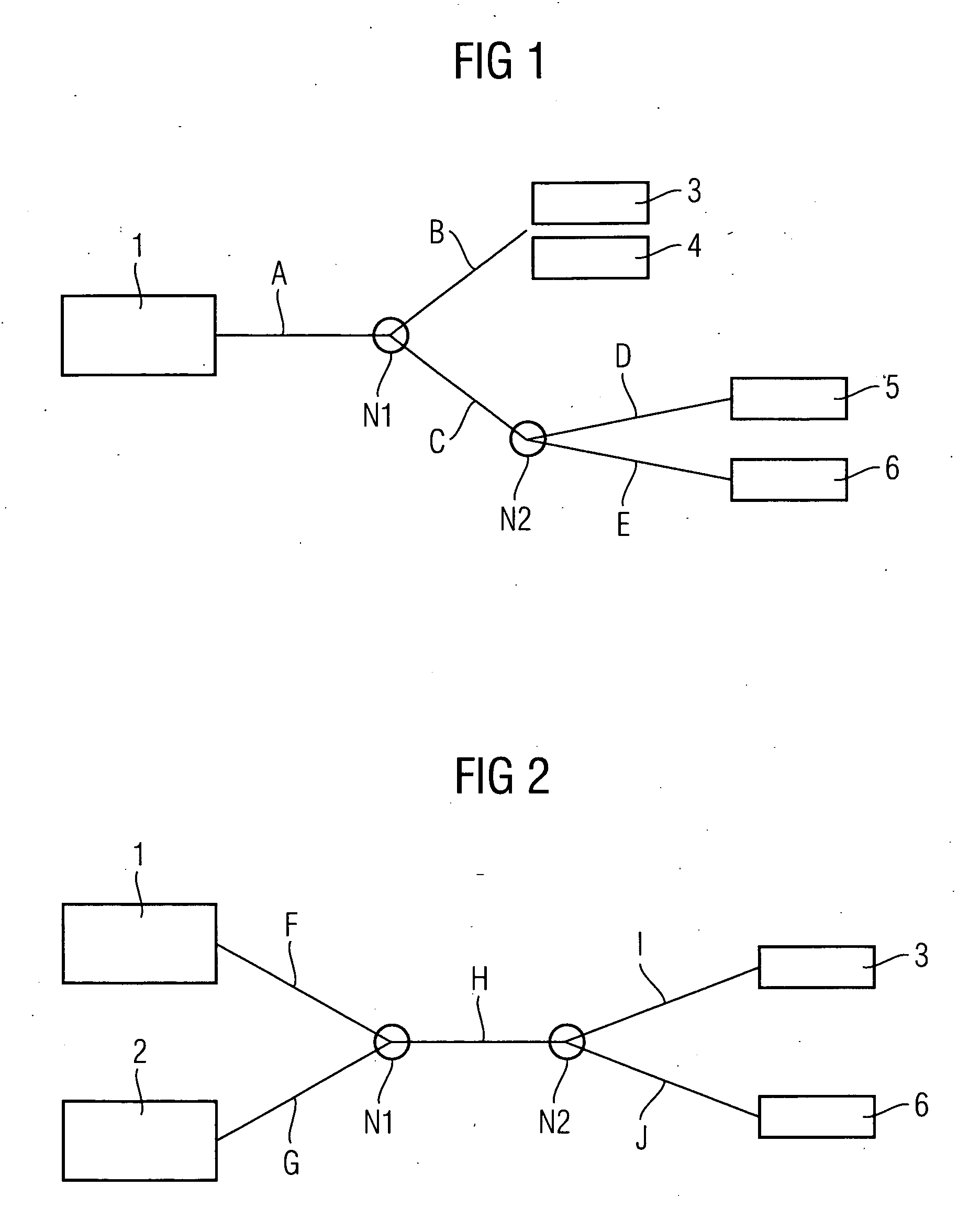Method for reserving bandwidth
a bandwidth and method technology, applied in the field of bandwidth reservation, can solve the problems of inefficiency of conventional bandwidth reservation in this respect, unnecessarily committed transmission capacity, and inefficient performance, and achieve the effect of reducing the consumption of network resources and more effective network managemen
- Summary
- Abstract
- Description
- Claims
- Application Information
AI Technical Summary
Benefits of technology
Problems solved by technology
Method used
Image
Examples
Embodiment Construction
[0019]FIG. 1 shows a section of a packet-oriented network. The component parts of this packet-oriented network are a first network element 1, a third network element 3, a fourth network element 4, a fifth network element 5, a sixth network element 6, a first node element N1 and a second node element N2.
[0020]Some of the above-mentioned functional units are interconnected by communication paths A, B, C, D, E. These communication paths A, B, C, D, E are to be allocated to a communication link to be established, starting from first calling network element 1. Initially in this case, a “calling” network element is generally understood to be a network element initiating a communication link. In an exemplary embodiment of the invention to be explained later—with the use of packet-oriented communication terminals or VoIP terminals—in accordance with telecommunications terminology the calling network element is to be considered as the source of a real-time communication to be established, su...
PUM
 Login to View More
Login to View More Abstract
Description
Claims
Application Information
 Login to View More
Login to View More - R&D
- Intellectual Property
- Life Sciences
- Materials
- Tech Scout
- Unparalleled Data Quality
- Higher Quality Content
- 60% Fewer Hallucinations
Browse by: Latest US Patents, China's latest patents, Technical Efficacy Thesaurus, Application Domain, Technology Topic, Popular Technical Reports.
© 2025 PatSnap. All rights reserved.Legal|Privacy policy|Modern Slavery Act Transparency Statement|Sitemap|About US| Contact US: help@patsnap.com


